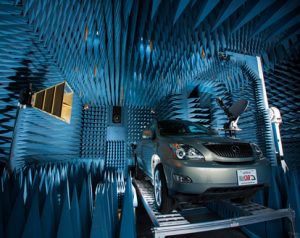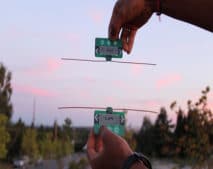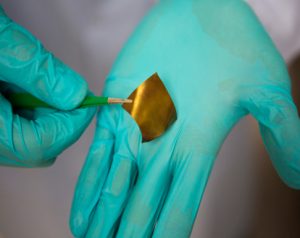A new $15 million facility at the University of Waterloo, Canada is expected to contribute significantly to the development of next-generation wireless technology. Featuring four interconnected indoor laboratories, one outdoor lab and an advanced computational facility, the new 5,000 sq. ft. Centre for Intelligent Antenna and Radio Systems (CIARS) is said to offer the highest … [Read more...]
Antenna Network Wirelessly Powers Devices
A new system provides wireless power to electronic and electrical devices using a series of antennas embedded underneath a surface, removing the need for electric cables. The Smart University Power Antenna (SUPA) Wireless technology uses a principle similar to that of induction cookers, according to researchers from the Fraunhofer Institute for Electronic Nano Systems (ENAS) … [Read more...]
New Coupling/Decoupling Networks for EMC RF Conducted Immunity Testing
Teseq, a provider of instrumentation and systems for EMC emission and immunity testing, has expanded its line of CDNs (coupling/decoupling networks) for EMC RF conducted immunity testing, according to IEC/EN 61000-4-6, with several new models—CDN USB 3.0, CDN HDMI, CDN S502, CDN S752 and CDN A801. Designed for use with shielded USB cables, the CDN USB 3.0 is capable of testing … [Read more...]
Faster RF Signal Analysis Using New Vector Signal Analyzer
Test and measurement company Agilent Technologies Inc. has released the M9391A, a 1-MHz to 3- or 6-GHz PXIe vector signal analyzer with up to 160-MHz bandwidth designed to test the latest wireless standards. The M9391A is designed to be used as a complementary product to the M9381A PXIe VSG signal generator for testing and design validation of wireless power amplifiers, … [Read more...]
Communication System Powers, Connects Battery-Less Devices
Engineers at the University of Washington have created a new communication system that takes advantage of wireless signals to power electronic devices without relying on batteries or wires. Known as ambient backscatter, the technique enables battery-less devices to exchange information with each other by repurposing existing Wi-Fi, mobile and television signals to act as both … [Read more...]
Researchers Design Acoustic-Based Data Transfer System for Smartphones
Researchers at Microsoft Research India have developed a new alternative acoustic-based data transfer system with capabilities similar to Near Field Communication (NFC) that requires no specialized wireless hardware. Derived from radio-frequency identification (RFID) technology, NFC enables low data rate, bidirectional communication between devices in close proximity in a … [Read more...]
TVS Array Protects Computing Applications from ESD and EFT
Semiconductor company ProTek Devices has released a new low capacitance transient voltage suppressor (TVS) array designed to protect computing applications from the damaging effects of electrostatic discharge (ESD) and electrical fast transients (EFT). “At higher operating frequencies or faster edge rates, insertion loss and signal integrity are a major circuit protection … [Read more...]
Microwave Absorption Film Suppresses Noise Greater than 30 dB Over 4GHz
A new thin microwave absorption film capable of suppressing noise from high frequency electronic devices has been released by Nikkan Industries Co., Ltd, a manufacturer of flexible laminates for flexible electronics. Featuring suppression rates of 20 dB at 2 GHz, 30 dB at 4 GHz and stable for frequencies greater than 4 GHz, the 42.5 microns thick Nikram film reduces both … [Read more...]
Stretchy Conductive Material Could Lead to Better Brain Implants
Researchers at the University of Michigan have created a stretchy conductive material that could one day find use in medical implants and flexible display screens and batteries. Created from gold nanoparticles and polyurethane, the material retains its conductivity even when stretched to several times its original length. Using an electron microscope to examine the effects of … [Read more...]
Signal-Filtering Algorithms Tackle Smartphone Interference
New signal-filtering algorithms developed to reduce interference in smartphones could provide users with faster performance, longer battery life and fewer dropped calls. Created through a partnership between Kansas State University’s Electronics Design Laboratory and Lawrence, Kan.-based research company Avatekh Inc., the algorithms are intended to more efficiently combat … [Read more...]
- « Previous Page
- 1
- …
- 42
- 43
- 44
- 45
- 46
- …
- 68
- Next Page »















